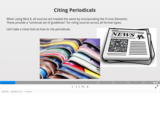
This LO covers how to create both the in-text citation and works cited citation for periodicals.
- Subject:
- Composition and Rhetoric
- English Language Arts
- Material Type:
- Interactive
- Provider:
- Michigan Virtual
- Date Added:
- 03/15/2022
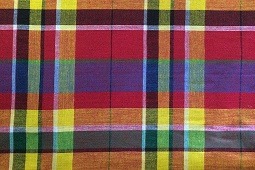

This LO covers how to create both the in-text citation and works cited citation for periodicals.
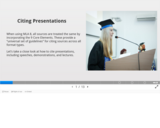
This LO covers how to create both the in-text citation and works cited citation for presentations.
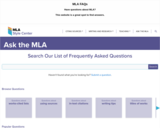
This LO presents a reputable website that consists of frequently asked questions and answers about MLA.
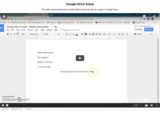
This LO demonstrates how to follow MLA guidelines and set up a paper in Google Docs.
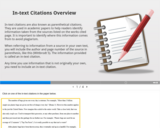
This LO introduces in-text citations and discusses how they connect to the works cited page.
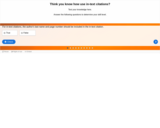
This LO provides a review of the rules that need to be followed to create in-text citations for a variety of sources.

This LO identifies the basic components of an MLA formatted paper and familiarizes students with with MLA terminology.
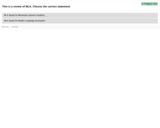
This LO provides a review of the basic MLA guidelines.
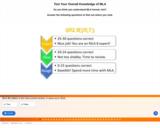
This LO provides 20 questions for students to test their overall knowledge and prowess of MLA 8 format.
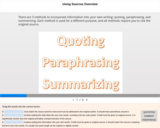
This LO explains the differences between quoting, paraphrasing, and summarizing. It restates the importance of citing sources and provides opportunities for student to practice.
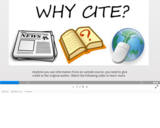
This LO provides background information about why it’s important to cite sources in academic writing.
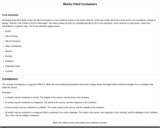
This LO explains how MLA 8 treats citations. It defines a “container” and explains how they are used.
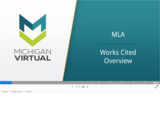
This LO introduces changes to works cited in MLA 8 and examines the connection between the works cited page and in-text citations.
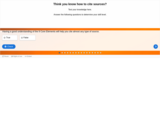
This LO provides a review of the basic rules that need to be followed to create a works cited page for a variety of sources.
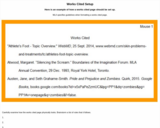
This LO demonstrates how to follow MLA guidelines to set up a works cited page.
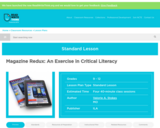
Paper and pixels get compared in this lesson in which students compare both printed and online versions of a magazine.

The true story of how Momofuko Ando was inspired to create one of the world’s most popular foods after seeing long lines of hungry people waiting for a simple bowl of ramen following World War II. He dreamed about making a new kind of ramen noodle soup that was quick, convenient, and tasty for the hungry people because he believed that peace follows from a hungry stomach. With persistence, creativity, and a little inspiration, Ando succeeded. The resource includes a lesson plan/book card, a design challenge, and copy of a design thinking journal that provide guidance on using the book to inspire students' curiosity for design thinking. Maker Challenge: Develop a food product (a new food, tool, or invention, et al) to help increase access to food in your community.

The International Dyslexia Association Georgia and The Reading League Georgia partnered to host Dr. Anita Archer as a presenter in their Structured Literacy Webinar Series. Dr. Archer details the necessity of teaching practices aligned in the Science of Instruction. When implementation of the Science of Instruction is consistent and effectively implemented, particularly for instruction aligned with the Science of Reading, improved student outcomes result.
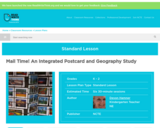
Children write and receive postcards from friends and family, and then chart where all those postcards come from on a classroom map.
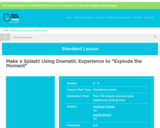
Students will have a blast as they use descriptive language to write about an explosive and dramatic moment in their lives.